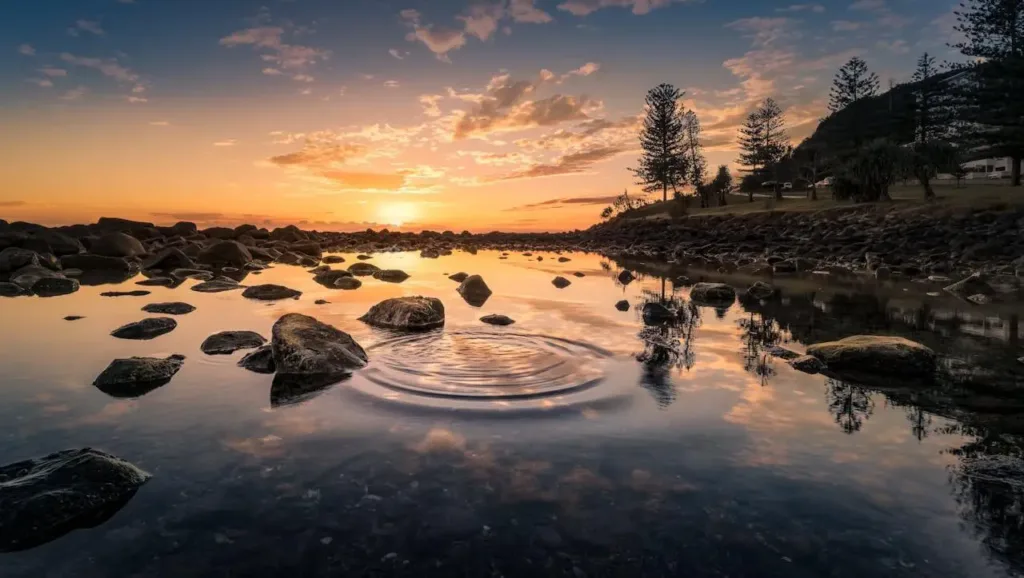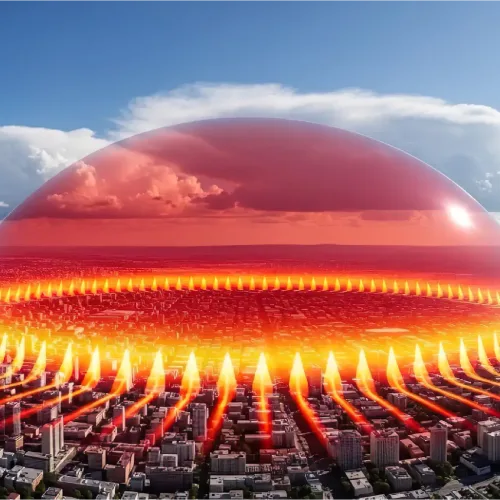My Curious Fellow, as you know, our planet has been facing many serious challenges over the past few decades. Deforestation, toxic smoke from factories, mills, and other environmental changes are severely damaging our ecosystem. But the good thing about all of this is that communities around the world are stepping up with community-led ecosystem restoration projects that are bringing nature back to life. The aim of these projects is not just to plant trees, but also to empower people, create awareness among them, promote biodiversity, and build a social ecosystem.
As part of the United Nations Decade on Ecosystem Restoration (2021–2030), these local ecosystem restoration initiatives show that grassroots action can have a significant impact. They prove that these actions can reach a global scale. In this article, we will learn about five ecosystem restoration success stories that will inspire you to get involved. Plus, we have a practical guide to help you get started on your community restoration project. Ready to join #GenerationRestoration? Let’s go!
Why Community-Led Restoration Works So Well
Restoring ecosystems on a large scale isn’t just about sticking a bunch of trees in the ground. It needs people in the community to take charge and stay involved over time. When locals get engaged in restoring their ecosystems, it not only helps them build the skills they need but also creates a sense of responsibility. Plus, it ties all that ecological work into the cultural values that matter to them.
1. The Power of Local Knowledge
Community restoration projects really thrive because the people who live there have such a deep understanding of their land. They know exactly where certain plants flourish, how water flows through the seasons, and the rhythms of wildlife throughout the year. This kind of knowledge, passed down through generations, often reveals insights that formal studies might miss completely.
Take the Menominee Nation in Wisconsin, for example. They have been using their traditional forest management practices to keep their ecosystems in check for ages. When they blend this time-honored wisdom with modern restoration techniques, the outcomes are quite remarkable. Their forests boast a richer variety of plants and animals, better carbon storage, and overall stronger ecosystems compared to areas managed the old-fashioned way.
2. Building Social-Ecological Resilience
- Collaborative planning sessions create trust between NGOs, governments, and locals.
- Community workshops on restoration interventions—like creating check-dams or seed banks—equip volunteers with practical skills.
- Ongoing monitoring indicators, co-designed by locals, guarantee data collection fulfills community priorities.
Inspiring Ecosystem Recovery Success Stories
These stories show how getting the community involved in restoring ecosystems can change the lives of people living there. Whether we are talking about lush forests or bustling urban neighborhoods, it’s amazing to see what can happen when locals step up and take charge.
1. Thailand – FLR349 Fund
In the beautiful provinces of Chiang and Nan in Thailand, something exciting is happening. Farmers are moving away from just growing one type of crop and adopting mixed farming systems instead. Although it is a big change, but they are not alone in this journey. With support from WWF-Thailand and the International Climate Initiative (IKI), more than 1,370 farmers have come together to plant all sorts of things—perennial trees, fruit trees, vegetables, and herbs—on an area of around 400 hectares.

This whole community effort focused on nature-based restoration is making a difference. It is not just about planting; it is about improving soil health, bringing back biodiversity, and even increasing the farmers’ incomes. They have a pretty ambitious goal too: to restore 8,000 hectares by 2030.
Of course, change isn’t always easy. Initially, some farmers were a bit hesitant to embrace this new approach. But through training sessions and community workshops, they managed to tackle these challenges. It just goes to show that when a community gets involved and believes in something, ecological restoration can really flourish.
2. Europe – Peat Restore
Peatlands are the unsung heroes when it comes to carbon storage. Take the Peat Restore project, for example. NABU, along with partners from Estonia, Latvia, Lithuania, and Poland, has been busy re-wetting about 5,300 hectares of degraded peatlands. How do they do it? Well, they are building dams and pulling out those thirsty plants that suck up all the water.
By doing this, they are actually preventing around 3 to 6 tons of CO₂ from escaping each year for every hectare. That’s a big deal for helping with carbon sequestration and bolstering climate resilience. And you know what really stands out? The community involvement. It made sure that people locally were on board with everything, which is crucial. Honestly, this could serve as a great model for restoration projects all around the globe.
3. Coastal Wetland Restoration in Louisiana
Louisiana’s coastal communities are stepping up with some of the most ambitious wetland restoration projects in North America. They are in a tough spot—rapid land loss from rising sea levels and industrial development is no joke. But the local groups have managed to restore thousands of acres of vital marshland, and they are doing it using nature-based solutions, which is quite impressive.

Take the Coalition to Restore Coastal Louisiana, for example. They are all about empowering community volunteers with training in restoration techniques. Things like installing living shorelines and propagating native plants. These initiatives don’t just make a difference for the environment; they create essential habitats for fish and wildlife, and let’s not forget, they also offer some natural storm protection for the communities along the coast.
Impact Metrics:
- Over 10,000 acres of wetland habitat restored
- 40% increase in fish populations in restored areas
- Significant improvement in water quality indicators
- Enhanced resilience to storm surge and flooding
4. Tanzania – East Usambara
The East Usambara Mountains are very special—a real treasure trove of biodiversity. But not too long ago, they faced some serious challenges due to deforestation. Thankfully, the WWF teamed up with the Tanzania Forest Conservation Group (TFCG) to kickstart a forest landscape restoration project. They set up village land forest reserves and brought in some new ways for people to earn a living, like beekeeping and agroforestry.
The results have been nothing short of amazing! Forest clearing dropped by a whopping 88%, fires decreased by 97%, and people’s incomes skyrocketed by 239%! Can you believe that? Plus, they have created a new forest corridor that connects previously fragmented habitats. This is a huge win for biodiversity recovery and really helps restore the ecosystem. It just goes to show how impactful these efforts can be!
5. China – Giant Panda Restoration
Giant pandas were close to disappearing from the planet not too long ago. But due to some amazing community-led initiatives, things have really changed for the better. The World Wildlife Fund, along with the Chinese government, set up 67 reserves that span about 1.4 million hectares. These efforts have helped protect around two-thirds of the panda population.
And by tackling issues where humans and wildlife clash, the number of pandas jumped from just 1,114 in the 1980s to a healthier 1,864 by 2014. Because of this impressive comeback, pandas went from being classified as endangered to vulnerable. These ecosystem restoration projects really highlight how crucial it is to protect their habitats if we want to save these iconic species.
These ecosystem recovery success stories prove that when communities lead, nature-based solutions can deliver incredible results for both people and the planet.
Practical Guide: How to Launch Your Own Community-Led Restoration Project
Thinking about kicking off your own community-led restoration restoration projects? Let’s break it down into seven straightforward steps that will help you get things rolling. I’ve thrown in some handy tips and ways to keep an eye on your progress to ensure you stay on the right path.
1. Set the Foundations
- Define Goals: Decide what you’re aiming for—restoring a wetland, boosting biodiversity, or improving ecosystem services like clean water.
- Choose an Approach: Pick a method like Forest and Landscape Restoration (FLR) or Ecosystem-based Adaptation (EbA), which are nature-based solutions tailored to local needs.
- Map Stakeholders: Involve locals, NGOs, and government agencies. Use traditional ecological knowledge to guide decisions.
- Research Legal Frameworks: Check land use laws or permits to avoid hiccups.
Example: In Tanzania’s East Usambara project, clear goals to reduce deforestation and engage locals set the stage for success.
2. Plan Your Project
- Site Analysis: Assess the ecosystem’s health—find degraded areas or invasive species.
- Select Techniques: Choose approaches like tree planting, Farmer Managed Natural Regeneration (FMNR), or agroforestry based on your ecosystem.
- Set Objectives: Be specific, e.g., “Plant 1,000 native trees in two years.”
- Budget: Estimate costs for seeds, tools, and labor.
Tip: Use tools like the IUCN Restoration Intervention Typology to pick the right techniques (IUCN Typology).
3. Gather Resources
- Inventory Resources: Start with what’s available—seeds, tools, or local expertise.
- Network: Connect with restoration practitioners for advice or partnerships.
- Secure Funding: Explore grants from programs like the International Climate Initiative (IKI) or Partnership for Forests.
Example: Thailand’s FLR349 fund leveraged IKI funding to support farmers, showing how external resources can amplify local efforts.
4. Implement the Project
- Risk Assessment: Plan for challenges like droughts or community pushback.
- Phased Implementation: Start small, test techniques, and scale up.
- Monitor Progress: Track monitoring indicators like tree survival rates or soil health.
- Adaptive Management: Adjust strategies based on what’s working.
Visual Idea: Create a flowchart showing the implementation phases (e.g., planning, planting, monitoring) to visualize progress.
5. Engage Your Community
- Involve Locals: Ensure the project benefits residents and respects their knowledge.
- Educate: Host workshops or school programs to spread awareness.
- Communicate: Share updates through community meetings or social media.
- Join Events: Participate in global restoration events to share your story.
Example: In Moshi, Tanzania, student involvement in tree planting fostered a sense of ownership and pride.

6. Grow Sustainably
- Long-Term Vision: Plan for maintenance beyond the initial project.
- Collaborate: Partner with organizations for shared resources.
- Build Capacity: Train locals in restoration skills for lasting impact.
- Join Networks: Connect with groups like the Global Landscapes Forum (GLF) for support (GLF Network).
Tip: Create a table comparing short-term vs. long-term goals to keep your vision clear.
7. Manage Knowledge and Grow Your Network
- Document: Record successes, failures, and lessons learned.
- Share Knowledge: Write blogs or create videos to inspire others.
- Stay Updated: Follow restoration interventions research to improve your work.
- Network: Join initiatives like Youth in Landscapes for global connections (Youth in Landscapes).
| Step | Key Actions | Tools/Resources |
|---|---|---|
| Set Foundations | Define goals, map stakeholders | IUCN Typology, local knowledge |
| Plan Project | Site analysis, budgeting | GLF guides, restoration manuals |
| Gather Resources | Inventory, funding | IKI grants, Partnership for Forests |
| Implement | Watch, adapt | Flowcharts, monitoring tools |
| Engage Community | Educate, communicate | Workshops, social media |
| Grow Sustainably | Collaborate, train | GLF network, training programs |
| Manage Knowledge | Document, share | Blogs, infographics |
The Future of Community-Led Restoration
Community-led ecosystem restoration projects are shaking things up when it comes to more democratic and local approaches to managing our environment. With climate change and nature taking a hit, these grassroots efforts are stepping up, showing us how we can bounce back and adapt quickly. It is not just about nature either; these initiatives are making communities more resilient too.
Over the next decade, I think we are going to see a significant surge in these ecosystem restoration projects. Digital tools are making it easier than ever to get projects off the ground. Plus, with crowdfunding and social media, communities can pool their resources and share knowledge like never before.
Conclusion
Community-led ecosystem restoration projects are changing our world, bit by bit. You must think about it: from the lush farms in Thailand to the heartwarming comeback of pandas in China, these stories of success are proof of what we can achieve when communities come together. It is not just about saving nature, but it’s about boosting resilience, helping biodiversity bounce back, and making sure future generations have clean air and water to enjoy.
Finally, you don’t have to be a scientist to jump in and make a difference! Seriously, with this handy guide, you can kickstart your own local restoration project and be part of a bigger movement. Every little action counts—whether it’s planting a tree or getting your neighbors excited about the cause. So, why not grab a shovel, gather your friends, and let’s get to work on making our planet a healthier place?




